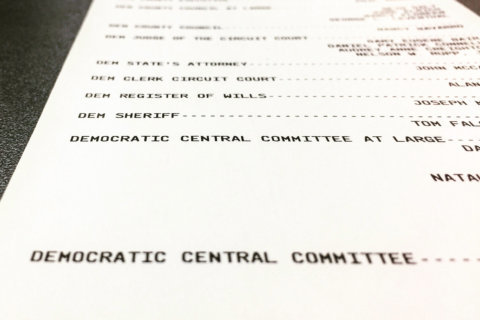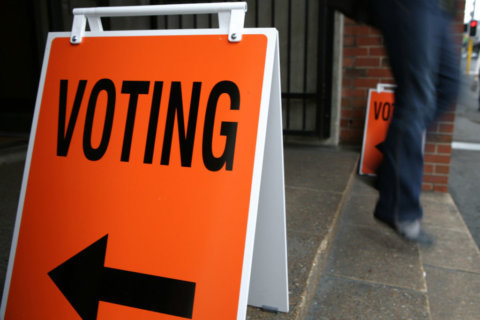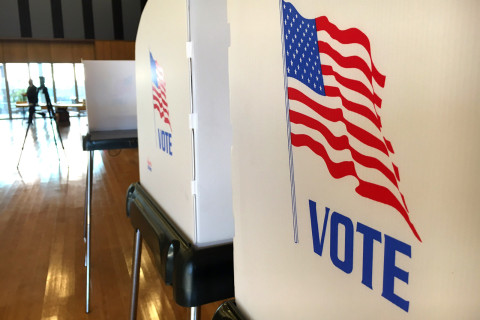GAITHERSBURG, Md. — From data breaches that expose the private information of consumers to reports that foreign governments have attempted to meddle in domestic politics, elections officials across the country have been increasingly aware of the need to ensure that the election process is fair and accurate.
In preparation for the June primary, local boards of elections in Maryland have been testing their ballot scanners, organizing the ballots themselves and training elections judges.
The Montgomery County Board of Elections recently held a briefing in which members of the public got a chance to see — step by step — how the ballots are scanned, the data is collected and the votes are tabulated.
“It’s very difficult to have a 100 percent, totally secure system of any kind,” said Rick Hansen, a professor of cybersecurity at Capitol Technical University in Laurel, Maryland.
Hansen was among the observers and admitted he was impressed with Montgomery County’s protocols.
“I think that Montgomery County has done everything they can do on their end to ensure the voting machines themselves are safe and secure,” he said. “They’ve limited what we call the ‘attack surface’ which is the number of ways that someone can get in the machines and compromise them.”
Hansen explained the voting machines have been used in hackathons as a way to discover their weaknesses and suggest updates to hardware and software.
The ballot scanners in use across Maryland — including those in Montgomery County — were introduced after older machines proved too vulnerable to potential breaches.
“Our machines are not connected to the internet at any point in time,” said Marjorie Roher, the Public Information Officer for the Montgomery County Board of Elections.
Instead, ballot scanners have removable USB memory drives that store the data. An elaborate chain of custody is used to ensure the results are secured for tabulation.
But there’s one area of the state’s voting process that alarms people like Rebecca Wilson with SAVE (Secure Accessible Verifiable Elections) our Votes, a group that advocates for a change to the way absentee ballots are handled, specifically when a voter accesses an absentee ballot electronically, like on a home computer.
“There’s no way to be certain that the person requesting and receiving the ballot is the actual voter,” Wilson said. “Maryland’s absentee ballot system is one of the most nerable in the United States to tampering and corruption.”
Wilson said there is a way to establish the authentication of the voter’s identity that’s used in other states: A signature is collected that can be compared against one on file. Wilson would like to see a similar system adopted in Maryland.
While Wilson said she is deeply concerned about the potential for compromise in the absentee ballot system currently used in Maryland, Wilson said her concern does not extend to election officials.
“Our elections officials are hardworking, honest people who try really hard to conduct our elections in the fairest and most accurate way possible,” she said.
Wilson said another area of concern is the fact that absentee ballots are sent to boards of elections and have to be copied onto ballots that are then scanned by the voting machines. She said she is not sure that most voters are aware of this process.
But the process is open to the public.
“We have bipartisan teams that look at the ballot that was sent in,” Roher explained. “They duplicate it onto a new ballot. They check it to make sure that they copied it properly. And then it’s sent to our bipartisan board members. They look at the original, they compare it with the duplicated ballot and then and only then does it get forwarded for tabulation.”
Advocates who want to see the absentee ballot process changed to increase security lost an attempt to change state law in Annapolis in the last General Assembly session.
It’s expected advocates will continue to work for a change to close what they say is a vulnerability in the system.








